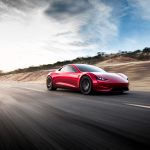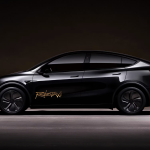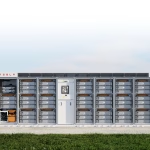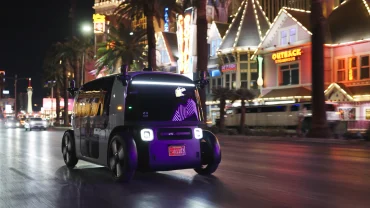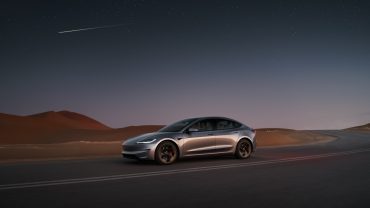
- Mobility Tech
Tesla Q2 Deliveries Expected to Drop 18% From Previous Year
6 minute read

Tesla vehicle deliveries face sharp decline as EV demand weakens and autonomous technology initiatives accelerate
Key Takeaways
- Tesla deliveries expected to drop 18% year-over-year with Wall Street anticipating approximately 390,000 vehicles delivered in Q2, down from 443,956 in the same period last year
- Tesla launches limited robotaxi service in Austin with 10-20 fully autonomous vehicles operating in a geofenced area, marking a strategic pivot toward AI-driven mobility services
- Tesla shares down over 14% this year amid declining demand in key markets and consumer backlash over CEO Elon Musk’s political alignment
Introduction
Tesla faces a critical moment as the electric vehicle pioneer prepares to release second-quarter delivery numbers this week. The company confronts a perfect storm of declining demand, political controversy surrounding CEO Elon Musk, and intensifying competition in global markets.
Wall Street expects Tesla to deliver approximately 390,000 vehicles in the second quarter, representing a significant decline from the previous year’s 443,956 deliveries. UBS projects an even steeper drop with estimates of 366,000 units, marking an 18% year-over-year decline that underscores the challenges facing the world’s most valuable automaker.
Key Developments
Tesla’s struggles began manifesting in the first quarter when the company delivered only 336,691 vehicles, falling short of market expectations. The disappointing performance coincided with broader challenges in electric vehicle adoption across key markets including North America and Europe.
High interest rates have dampened consumer appetite for expensive electric vehicles, while political backlash over Musk’s association with former President Donald Trump has created additional headwinds. The CEO has since distanced himself from Washington politics, focusing attention on managing his business operations.
Production levels have reached approximately 434,000 vehicles, creating an inventory surplus that raises concerns about demand failing to keep pace with manufacturing capacity. This gap between production and deliveries means rising inventory levels, which could pressure profit margins if price cuts become necessary to clear stock.
Market Impact
Tesla shares have declined more than 14% this year and fell further in premarket trading on Monday ahead of the delivery announcement. The stock’s underperformance reflects investor concerns about the company’s ability to maintain growth momentum in a challenging environment.
UBS maintains a “sell” rating on Tesla shares with a $215 price target, warning that weak delivery results could trigger additional selling pressure. The investment bank’s bearish stance reflects broader skepticism about Tesla’s near-term prospects in traditional vehicle sales.
Competition from Chinese manufacturers has intensified pressure on Tesla’s market position, particularly in the crucial Chinese market where deliveries are expected to decline. The company is responding by developing more affordable vehicle models and updating its popular Model Y SUV.
Strategic Insights
Tesla is executing a strategic pivot toward autonomous vehicle technology as traditional car sales face headwinds. The company recently launched a limited robotaxi service in Austin, Texas, with 10-20 vehicles operating in a geofenced area using Tesla’s proprietary Full Self-Driving software and in-house AI chips.
This autonomous push represents a fundamental shift in Tesla’s business model from pure vehicle manufacturing toward AI-driven mobility services. If successful, the robotaxi platform could generate new revenue streams and improve asset utilization, potentially offsetting volatility in traditional vehicle sales.
The company achieved a notable milestone with the first fully autonomous delivery of a Model Y from factory to customer home, including highway driving at speeds exceeding 70 mph without human oversight. This demonstration extends capabilities initially shown in April when vehicles moved autonomously from assembly lines to logistics facilities.
Expert Opinions and Data
Elon Musk announced the autonomous delivery achievement on social media, stating: “The first fully autonomous delivery of a Tesla Model Y from factory to a customer home across town, including highways, was just completed a day ahead of schedule.” He emphasized that “there were no people in the car at all and no remote operators in control at any point.”
Tesla engineer Ashok Elluswamy confirmed the vehicle reached 72 mph during the autonomous journey, calling it “Zippy!” The technical achievement represents progress toward Musk’s projection of millions of driverless Teslas operating by late 2025.
Industry analysts remain divided on Tesla’s autonomous vehicle capabilities. While some view the robotaxi rollout as a major technological leap, most agree the company faces significant operational and regulatory hurdles before achieving widespread deployment.
Skepticism persists about Tesla’s reliability in delivering autonomous features consistently, particularly given previous delays in self-driving capabilities. Competitors like Waymo already operate supervised autonomous vehicles on freeways, raising questions about Tesla’s safety protocols and testing procedures.
Conclusion
Tesla stands at a crossroads between declining traditional vehicle sales and ambitious autonomous technology development. The company’s second-quarter delivery numbers will provide crucial insight into whether recent challenges represent temporary headwinds or fundamental shifts in market dynamics.
The success of Tesla’s robotaxi initiative could redefine both its business model and the broader mobility landscape, transforming the company from a carmaker into a comprehensive mobility platform provider. However, significant technical, regulatory, and consumer adoption challenges remain before this vision becomes reality.
